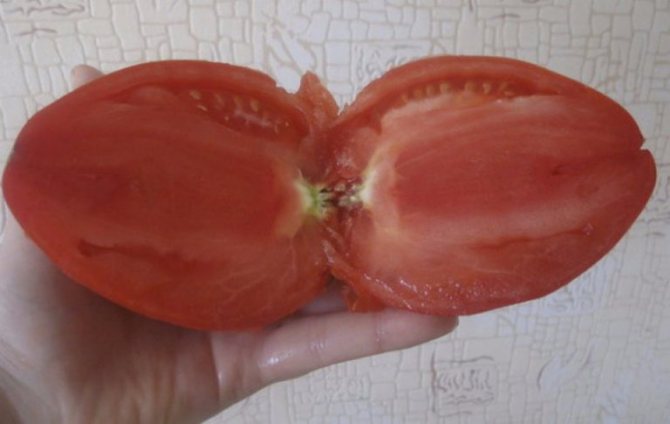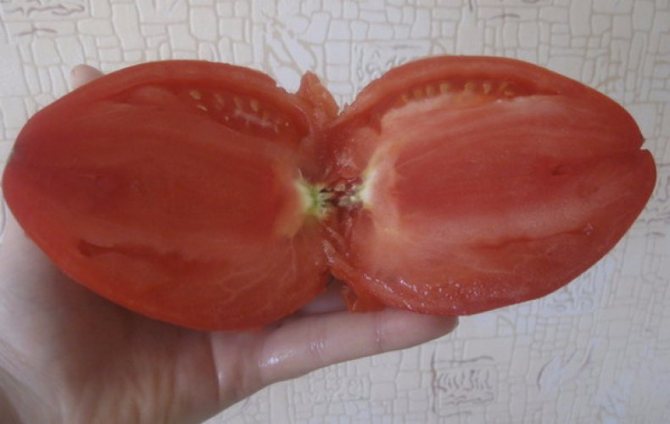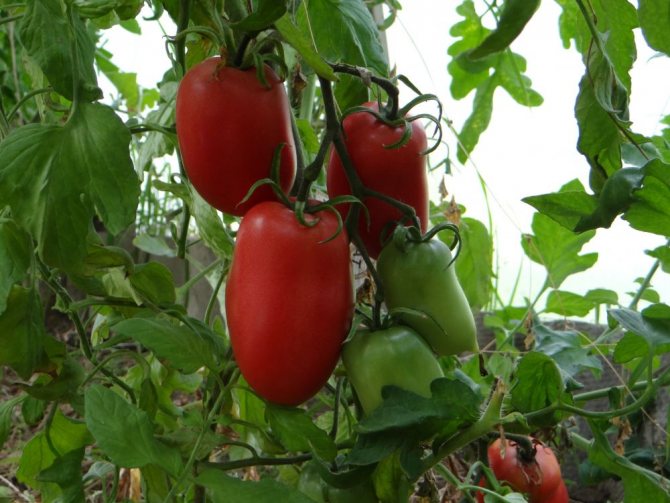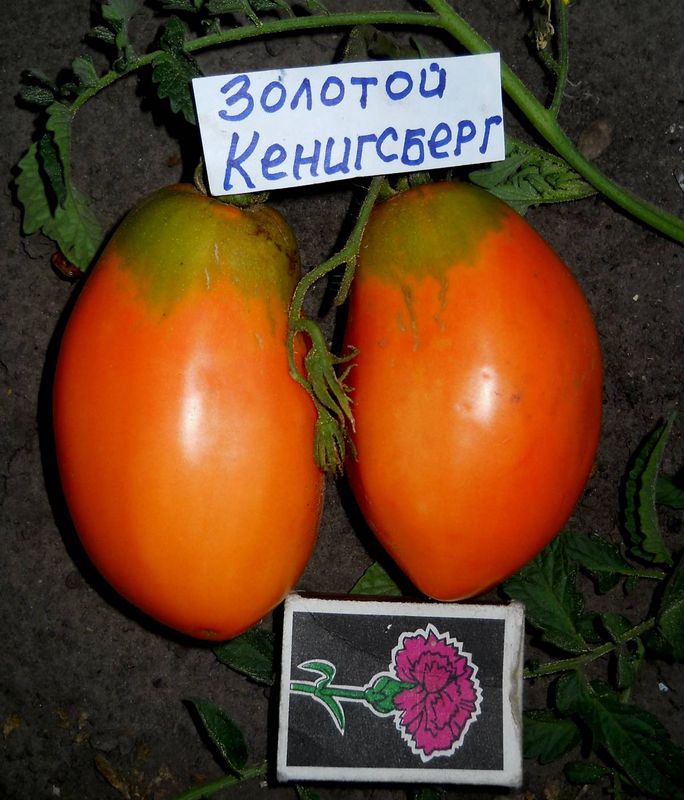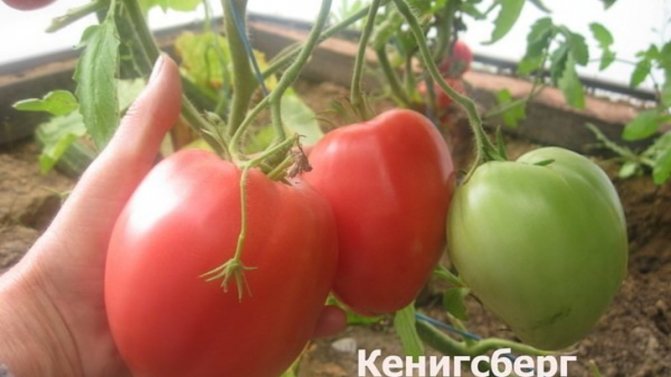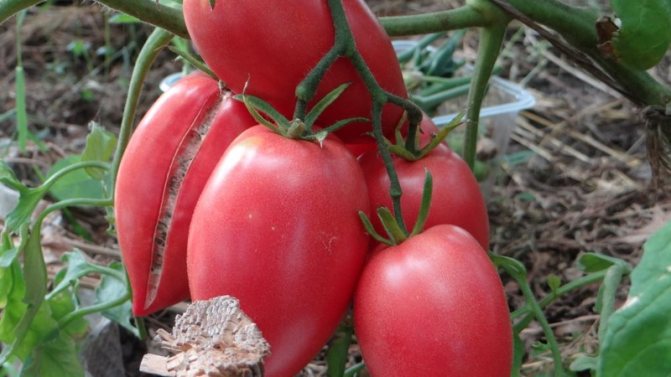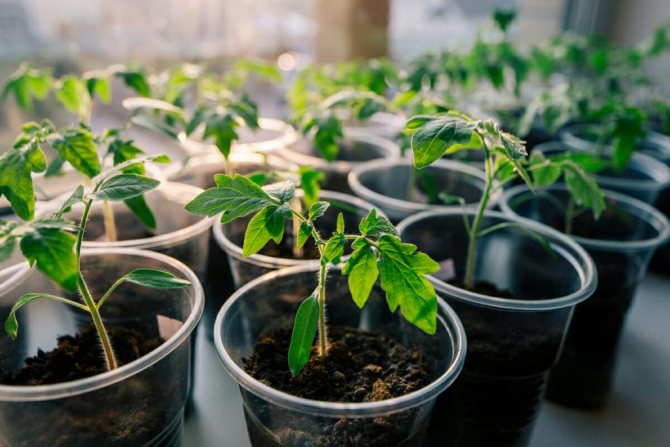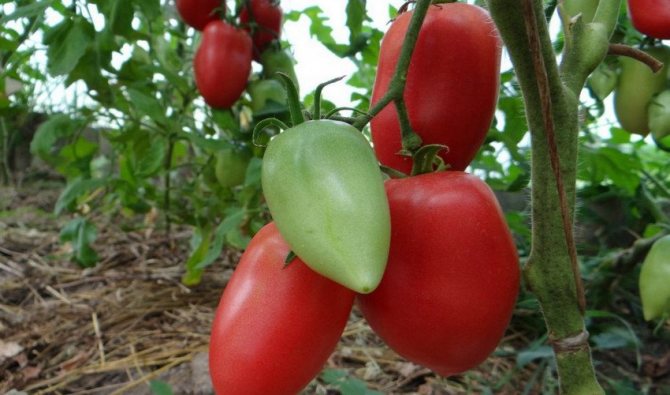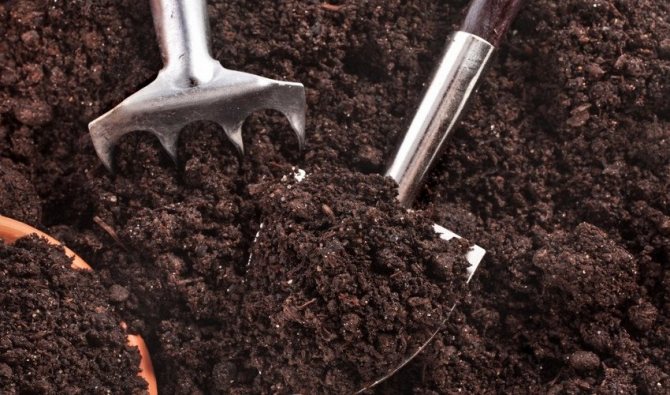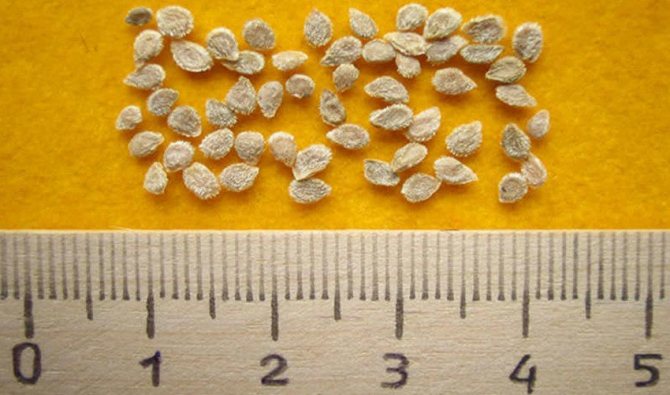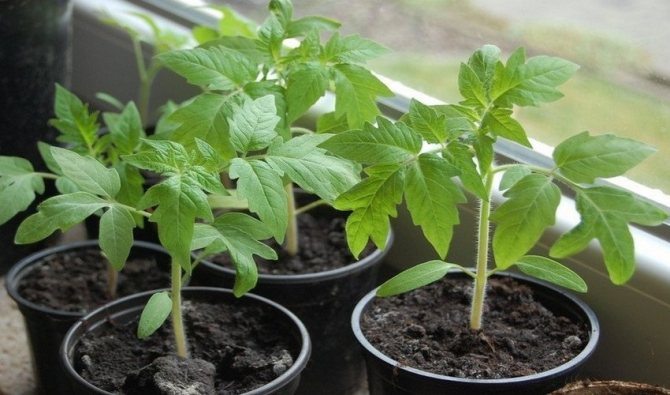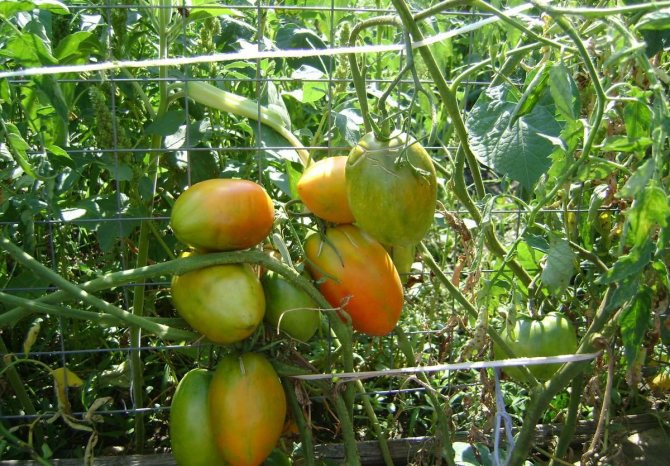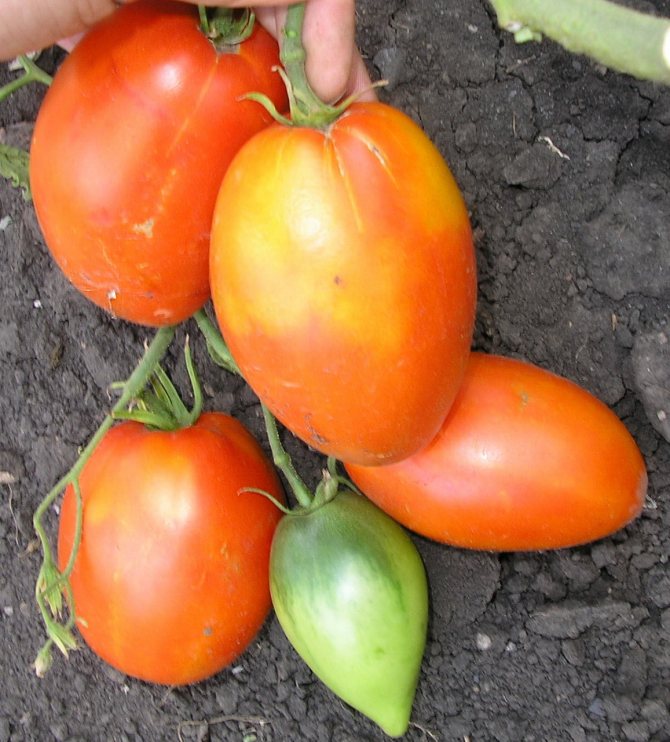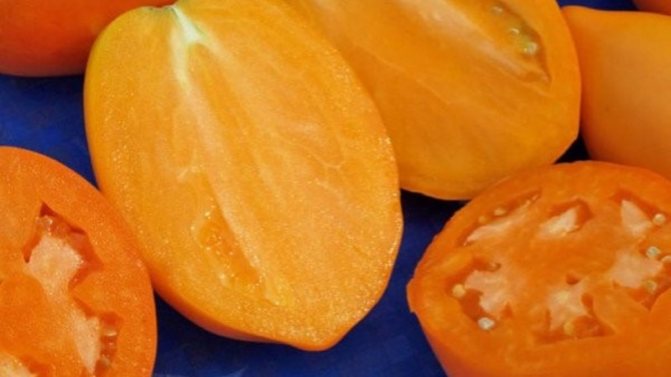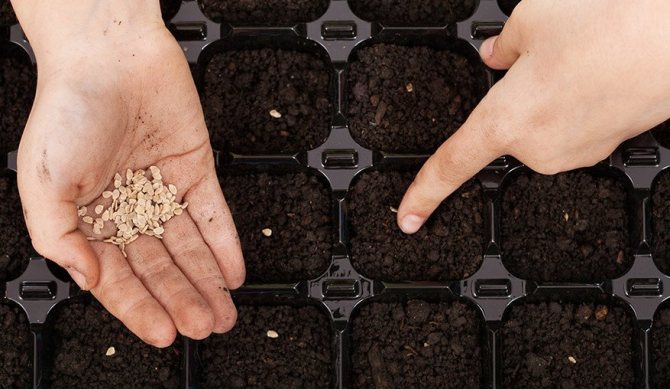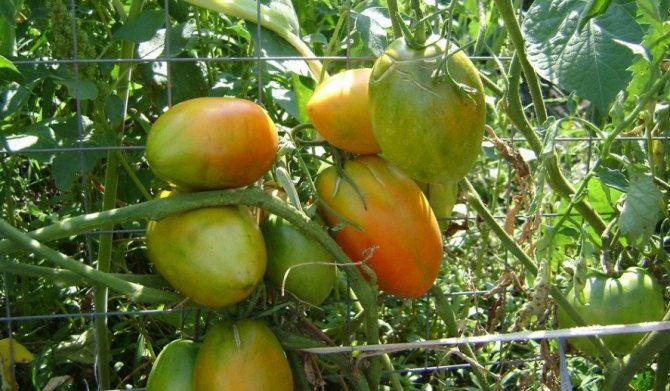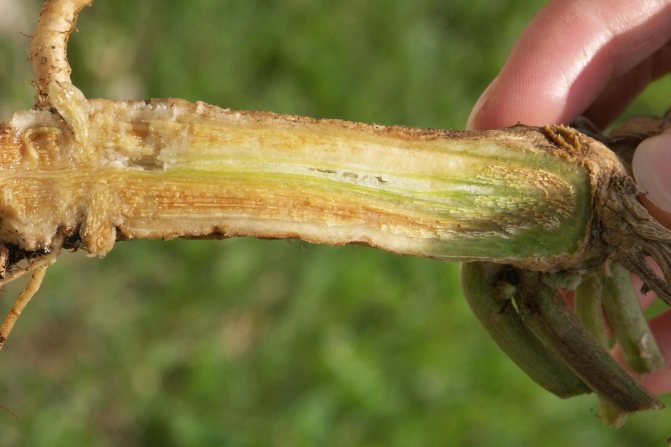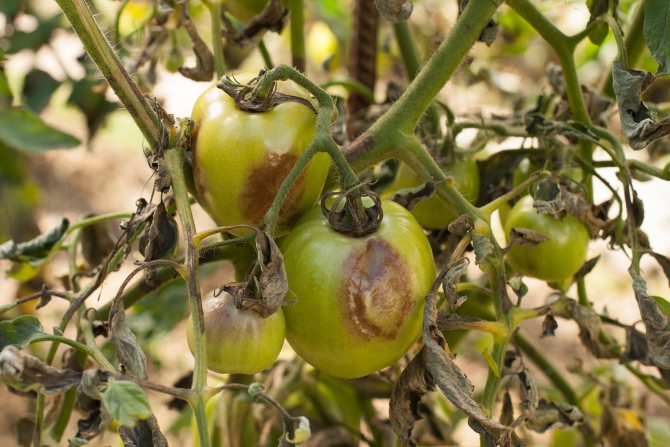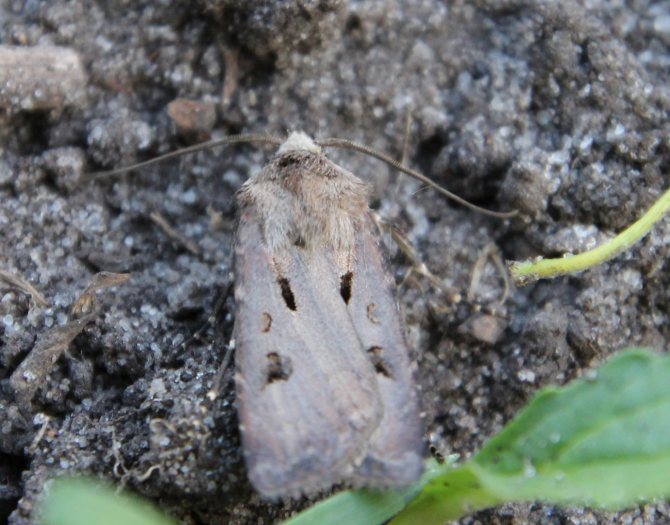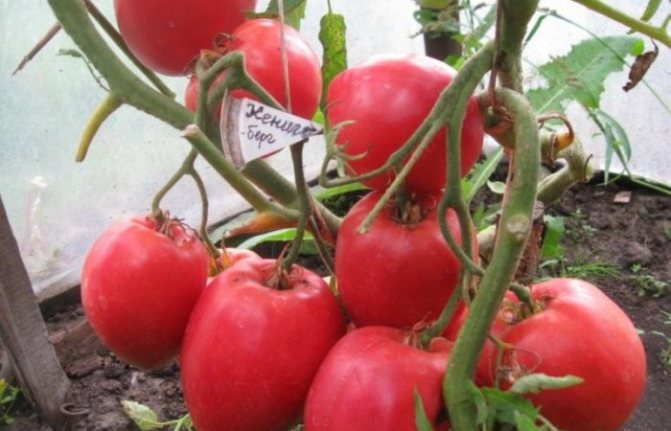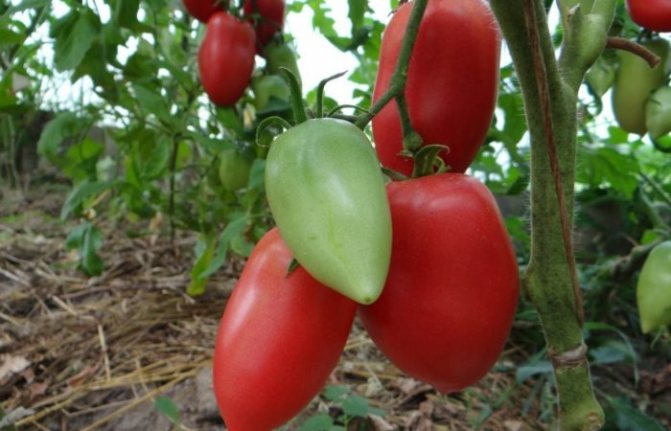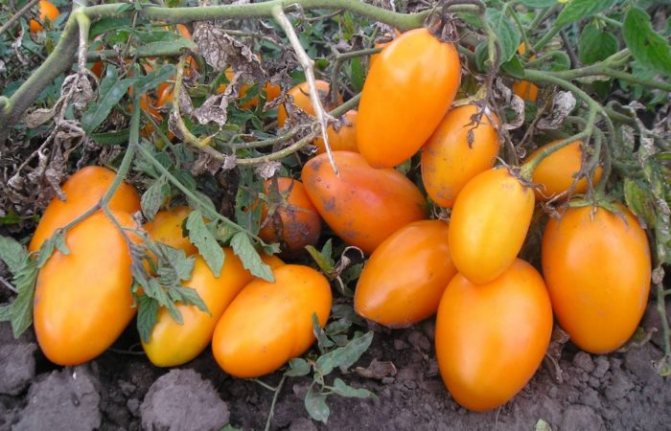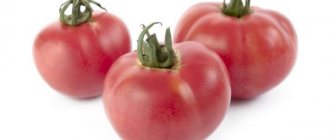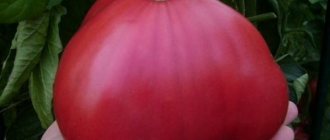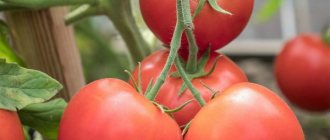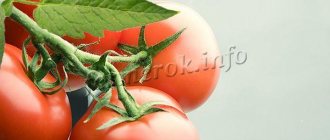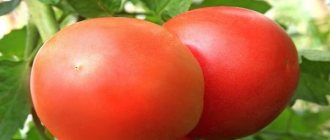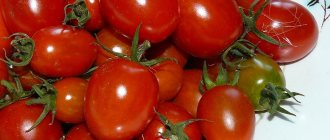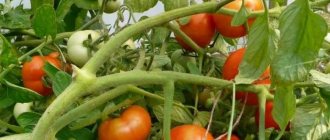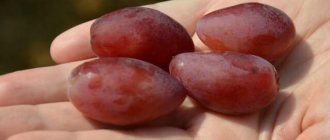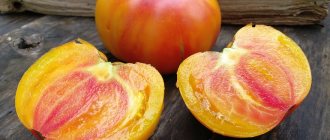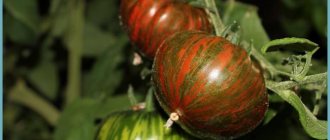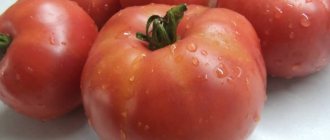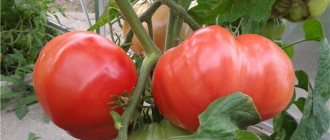Description of the plant
Königsberg is a plant of an indeterminate type that needs to be tied, pinned and pinched. The cultivar is formed in one or two stems. The average height of the bushes ranges from 1.5 to 1.8 m, but can reach 2 m. The inflorescences are simple, the first is above the 12th leaf, the subsequent ones are after 3 leaves.
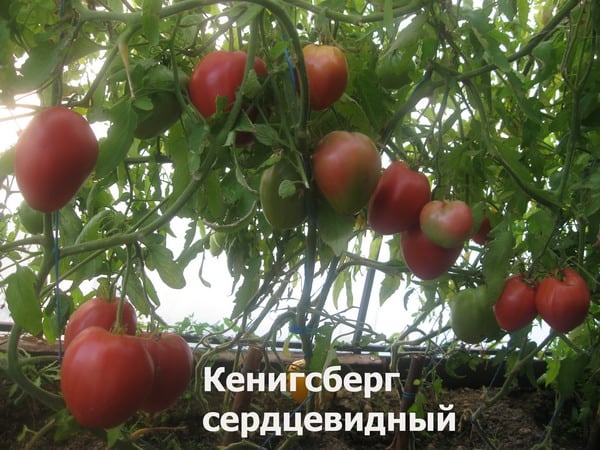
Up to 6 tomatoes are tied in each fruit cluster. To achieve the maximum yield and good quality of the fruits, 7-8 brushes are left in the growth process, after which the growth points are pinched.
Bred by
The Golden Konigsberg tomato belongs to the group of varieties of folk selection. Experts failed to establish where and by whom exactly these wonderful tomatoes were bred. There is an opinion that initially such tomatoes began to be grown in Siberia. Perhaps, they were brought out by the famous Novosibirsk citizen Vladimir Dederko, the author of the beloved variety of Konigsberg. However, unfortunately, it is not known for certain who exactly was engaged in the selection of this tomato. This variety was entered into the State Register in 2005.
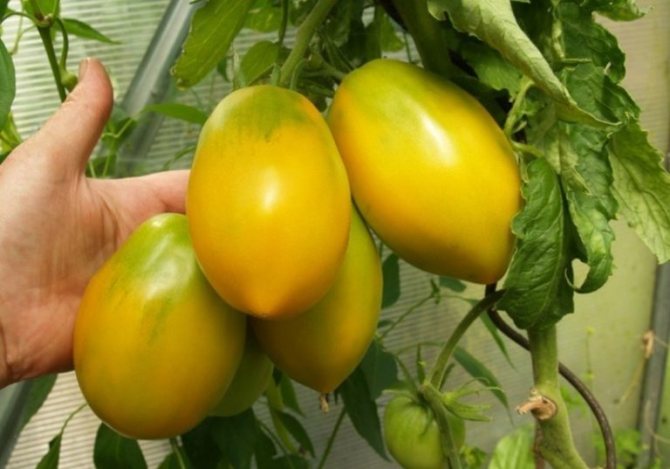

Fruit characteristics
Königsberg is a large-fruited variety. Its tomatoes have a cylindrical shape, smooth, dense peel, which ensures their good keeping quality and transportability. The number of seed nests is three to four. The color of the fruit during ripening changes from light green to red. Their mass, according to the results of state tests, ranges from 150 to 230 g, but can reach 300 g.
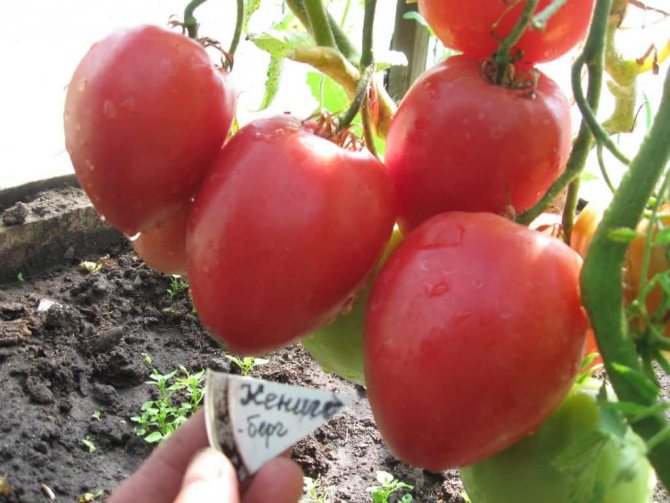

Here, the taste is assessed as excellent.
Marketable yield of Konigsberg ranges from 4.6 to 20.0 kg / m2.
Breeding history of the variety
Tomato Konigsberg, despite the German name, was created by breeders of Siberia. This variety, which has a number of positive qualities, was created as an independent hybrid. Two varieties have been bred: Konigsberg red and Konigsberg gold, combining several subspecies.
Each has its own distinctive features, and the qualities common to both are large-fruited and yield.
| Subspecies | Characteristic |
| Koenigsberg striped | Interesting in red with yellow stripes. Its weight is 300g. The fruits are cylindrical and smooth. Suitable for canning and fresh consumption. |
| New Konigsberg | A variety of amateur selection. It belongs to the medium early and is grown both in greenhouses and in the open field. Differs in abundant fruiting even "in the open air". Transportable. |
| Pink Koenigsberg | An amateur variety with smaller, pepper-shaped fruits. Their weight reaches 200g. The fruits set well in a greenhouse. |
| Königsberg heart-shaped | The tallest of all varieties. Its fruits reach 1 kg, so they are most often used fresh. |
The variety was bred in the Novosibirsk region, where it passed its first tests. In other regions, culture has also shown itself on a positive side. It was registered in the Register of Breeding Achievements in 2005. The creator of the variety is Vladimir Dederko and his team.
Photo: Seeds "Siberian Garden"
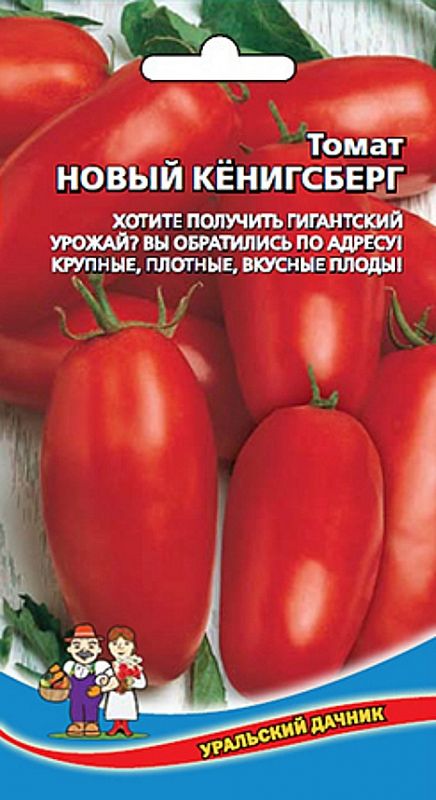

Photo: Seeds “Uralsky Dachnik”
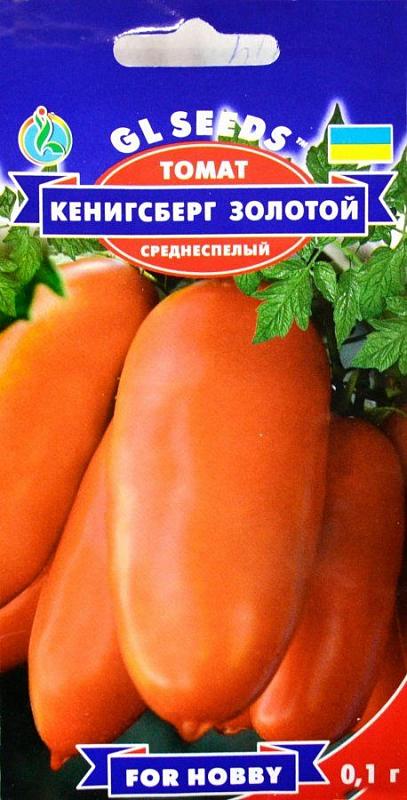

Photo: Seeds “GL Seeds”
Tomato cultivation
Königsberg, with a ripening period of 115 days, is a mid-season variety. It is grown exclusively by the seedling method.
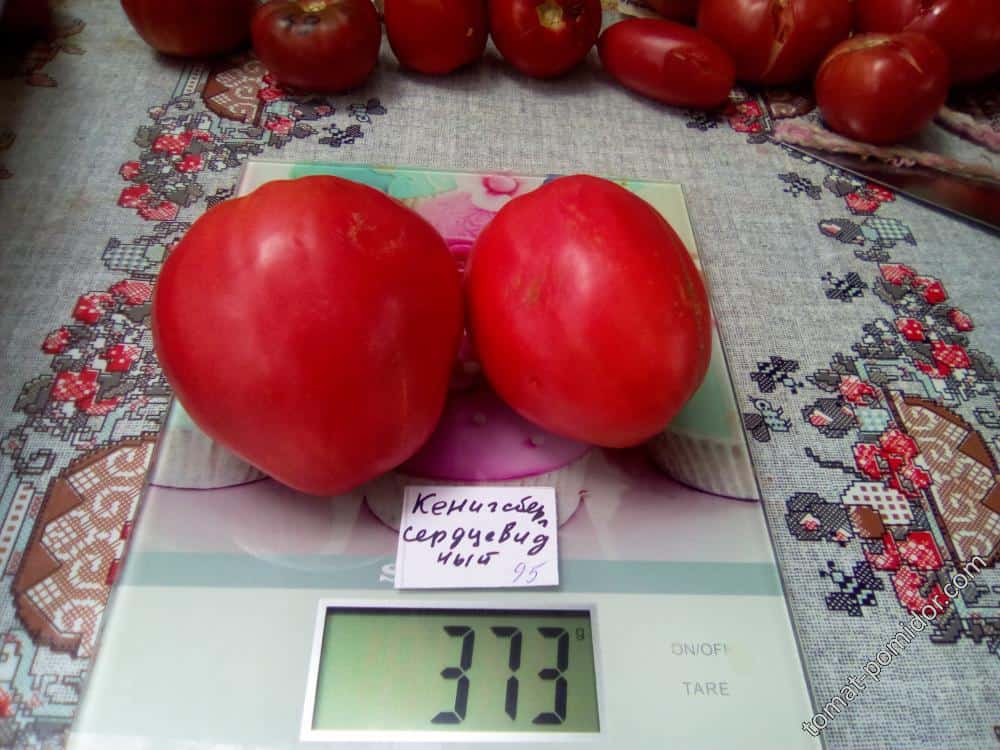

Further, based on the recommendations of the originator, calculations for open ground will be given. As the initial data, the age of seedlings from germination to rooting in the soil is 60 days and the already mentioned period from germination to maturation is 115 days.
Approximate dates for major events:
- planting seeds for germination - March 22;
- sowing seeds - March 27;
- expected shoots - April 1;
- rooting of seedlings in the ground - June 1;
- ripening of fruits - end of July.
Seed handling
Königsberg can be grown from your own seeds. In any case, it all starts with their etching... For this, it is best to use a weak solution of potassium permanganate. Its pink color characterizes concentration without making a gross mistake. The seeds are kept in such a solution for 15-20 minutes, after which they are washed in running water.
The following procedure is - germination - has two goals:
- This is a germination test.
- A way to stimulate plant development.
A piece of cloth folded in several layers and soaked in water is placed at the bottom of a small food container. Seeds are laid out on it, the container is tightly closed with a lid to preserve moisture and all this is placed in a warm place (25-28 ° C).
It is important that the seeds are not submerged in water. This can lead to their decay.
The germination process ends when the white sprouts are equal in size to the seeds. This will take 4-5 days (it depends on the temperature).
Sowing seeds for seedlings
It starts with the preparation of the substrate. Any purchased soil can be used here. Your garden soil must be disinfected by spilling it with the same potassium permanganate solution. Work with seeds and soil can be combined. After the earth dries up, it is filled with a mineral complex of the full composition of NPK (nitrogen, phosphorus, potassium) in the proportion of one tablespoon of tuk per bucket of substrate.
To avoid a pick, which is painful for sprouts, the seeds must be sown immediately in separate cups or cassettes. The seeding depth is no more than 1 cm.
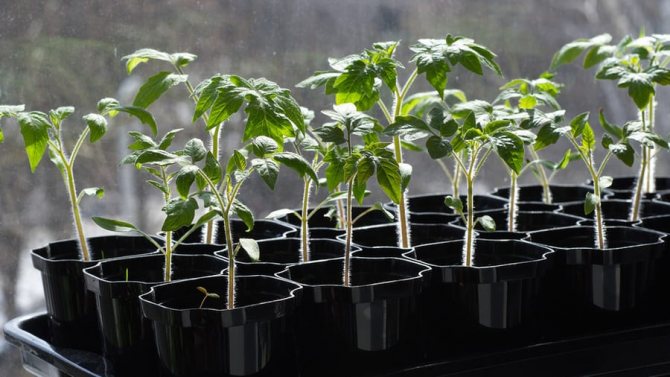

Seedlings can be expected in 5-6 days.
Seedling care
The main thing here is regular watering. It should not be excessive - this can lead to decay of the roots. Watering the seedlings is necessary when the topsoil dries up.
Seedlings, standing on the windowsill, reach for the light and bend. To avoid this, it must be turned regularly.
Solanaceous stems, covered with earth, begin to grow additional roots. The growth of the root system leads to a proportional growth of the ground part of the plant. This quality, inherent in tomatoes, can be used to strengthen them, making the transhipment of seedlings into larger containers with a buried stem to the lower leaves.
If, during sowing, the cups are filled with soil halfway, then it will be possible to stimulate root growth by sprinkling the seedlings when they grow up.
Planting seedlings
Large bushes of Königsberg are placed in beds with a density of 3 plants per sq. meter. Depending on the size of the garden bed, the options are 60x55 and 65x50 cm. Before the seedling is rooted, a teaspoon of full fat is poured into the planting hole and mixed with the ground. Then a support peg with a height of at least 1.5 m is driven in for subsequent garters.
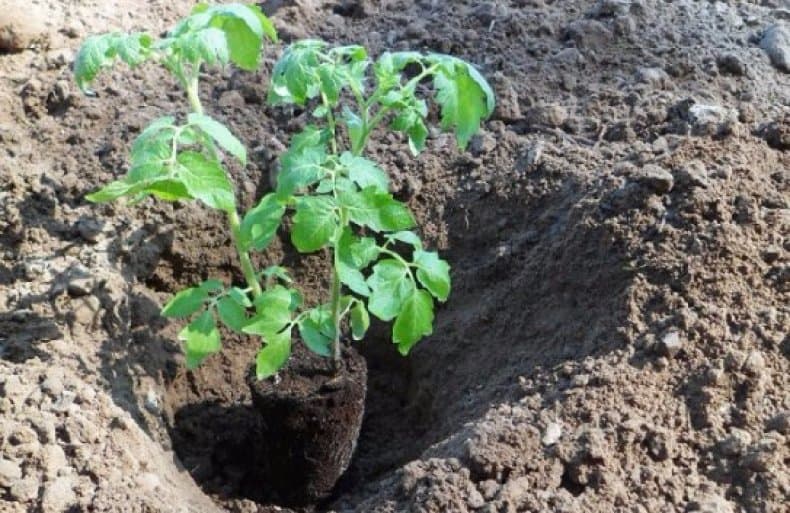

Planting is carried out with a deepening of the stem. So that the roots of the seedlings are not too deep, the seedlings can be buried obliquely (lying).
Growing and care
The Königsberg tomato variety requires standard care.
- Watering. In hot, dry weather, plants are watered abundantly at the root. High-quality watering is especially important at the time of flowering and fruit pouring. During the ripening period, it is reduced to a minimum or stopped altogether.Excessive moisture will cause the tomatoes to crack.
- Top dressing. Approximately 2 weeks after planting, at the time of intensive growth of the vegetative mass, experienced gardeners feed the tomatoes with fermented infusion of nettle or mullein. This promotes the development of strong, sturdy shrubs. The next feeding is carried out at the time of the laying and development of the fruit cluster. For this, a mixture of urea, superphosphate and potassium sulfate is used. Fertilizers are diluted in full accordance with the attached annotations.
- Formation. The Königsberg tomato variety requires the obligatory formation of bushes. This helps to limit the development of leaf mass and normalize the number of brushes. Tomato Konigsberg is formed in 1 stem, less often in 2.
- Removal of stepchildren is carried out after they reach a length of 3-4 cm. For painless removal and to prevent regrowth, hemp should be left. Untimely pinching significantly reduces the yield, postpones the ripening period. A large number of leaves reduces ventilation, creates favorable conditions for the development of fungal diseases, various rot.
- The Konigsberg tomato is a giant variety, therefore, at the end of August, the apical growth point is removed from it and part of the lower leaves are removed. This speeds up the ripening of tomatoes. According to reviews, those who planted, grew this variety, no more than 2-3 leaves should be removed at a time. Otherwise, due to a sharp decrease in moisture evaporation from the leaves, the tomatoes begin to crack.
Tomatoes are harvested in dry, warm weather. Fruits in the stage of milky ripeness and completely green are harvested separately. They can be used for further ripening. To do this, they are laid out in a dry, dark and warm place. Stored tomatoes should be sorted periodically, picking out ripe and rotten tomatoes.
Königsberg tomato cultivation does not differ much from standard tomato cultivation methods. The variety has good taste, is not very demanding and deserves attention.
Reviews of those who planted Königsberg tomatoes
Gulnara, Irkutsk
I believe that the Konigsberg variety has no drawbacks! He has all the characteristics at his best: large and tasty tomatoes, disease resistance, care without fanaticism and a very decent yield. The only thing I didn't like was that it knits badly in the heat. But with a decrease in temperature, I made up for lost time! In short, this is one of my favorites!
Oksana, Vinnytsia
I have been growing the Konigserg tomato variety for a long time and I am not going to get rid of it. Tomatoes are beautiful, tasty, and at the same time lie perfectly and tolerate transportation well. This is very rare. Tomatoes are fleshy and firm, good for preservation and drying. I highly recommend this variety!
Gardener Irina, Chelyabinsk
I am a gardener with 25 years of experience. I grow tomatoes in a polycarbonate greenhouse. For 10 years now, every year in my greenhouse there are seedlings of the Königsberg variety. I carry a tomato in 2 stems, it grows up to 2 m. The bushes resemble a tomato tree, densely hung with large fruits of varying degrees of ripeness.
The fruits are cylindrical, with a pointed tip, very dense, even. The mass of fruits is generally more than 200 g, up to 300 g. Tomatoes have an excellent taste - aromatic, sweet, fleshy. There are few seeds in these tomatoes, since the content of the pulp prevails. I consider them to be the best variety for greenhouses.
Planting seedlings in open ground
Tomato Konigsberg takes root easily and adapts to external conditions. For planting, you should choose areas that are well protected from the wind. In autumn, it is imperative for the best growth of tomatoes to fertilize their soil with humus and fertilizer containing phosphorus.
To do this, 1 sq. m take 1 bucket of humus and 40 g of superphosphate.
The age of seedlings for planting in the ground is about two months.It can be planted when the ground warms up to +14 ° C, in the absence of night frosts, this is usually May-June. With frequent frosts, planting is carried out in greenhouses or other temporary shelters.
When landing, holes are planned according to any landing scheme, taking into account that 1 sq. m should have no more than three tomatoes. After planting, water the wells and seedlings well with warm water at a temperature not lower than +20 ° C.
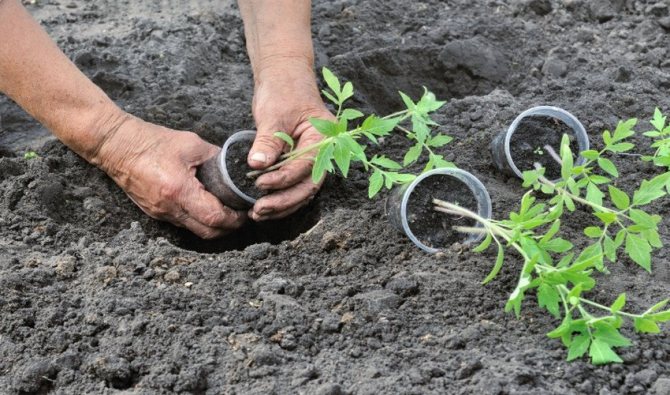

Do not be upset that the seedlings look inconspicuous in appearance - this is a feature of the variety. As they grow and develop, the bushes of this tomato acquire a much stronger appearance.
Photo
Meet the "Siberian tomato"!
That's all the subtleties you need to know about the excellent Königsberg tomato variety. Follow the tips above and you can grow a healthy crop that will surely delight your harvest. Good luck!
You can also watch a video where you will be told about the characteristic features of the Konigsberg variety.

